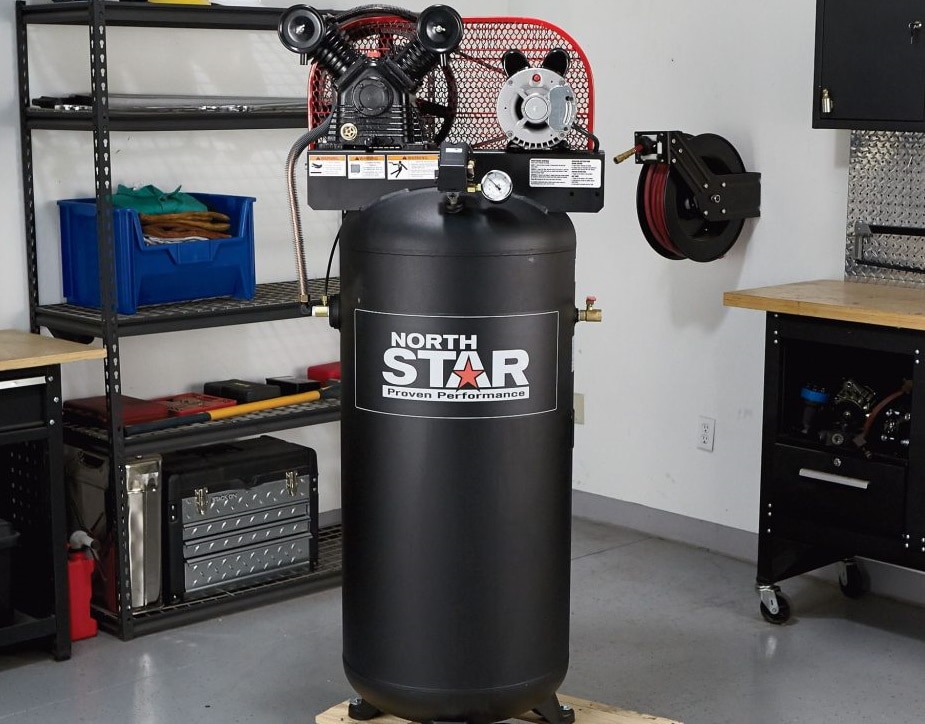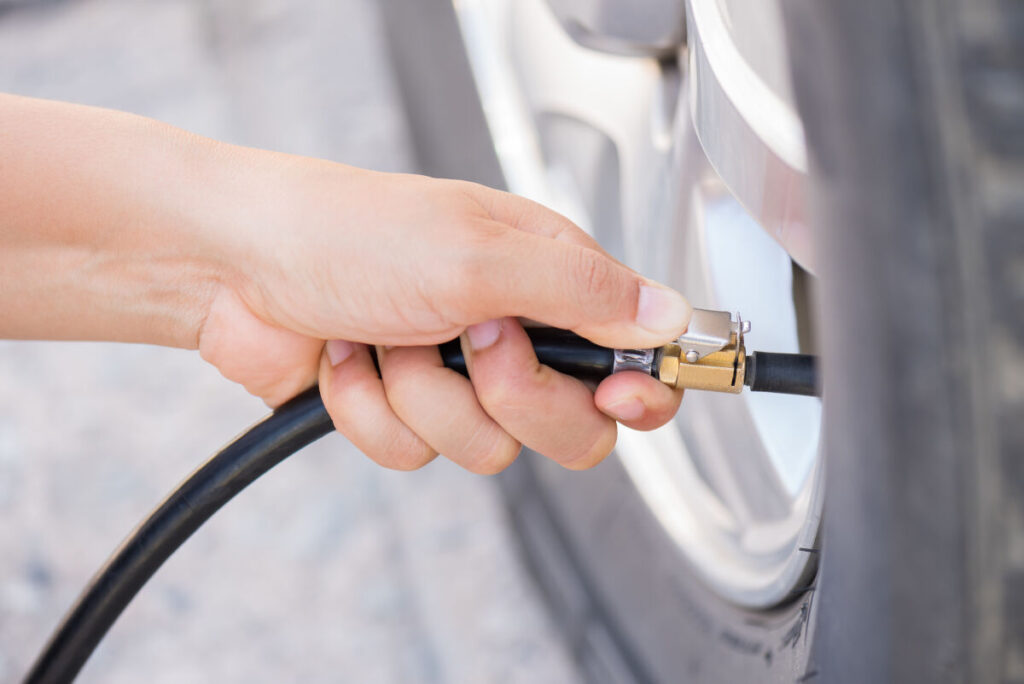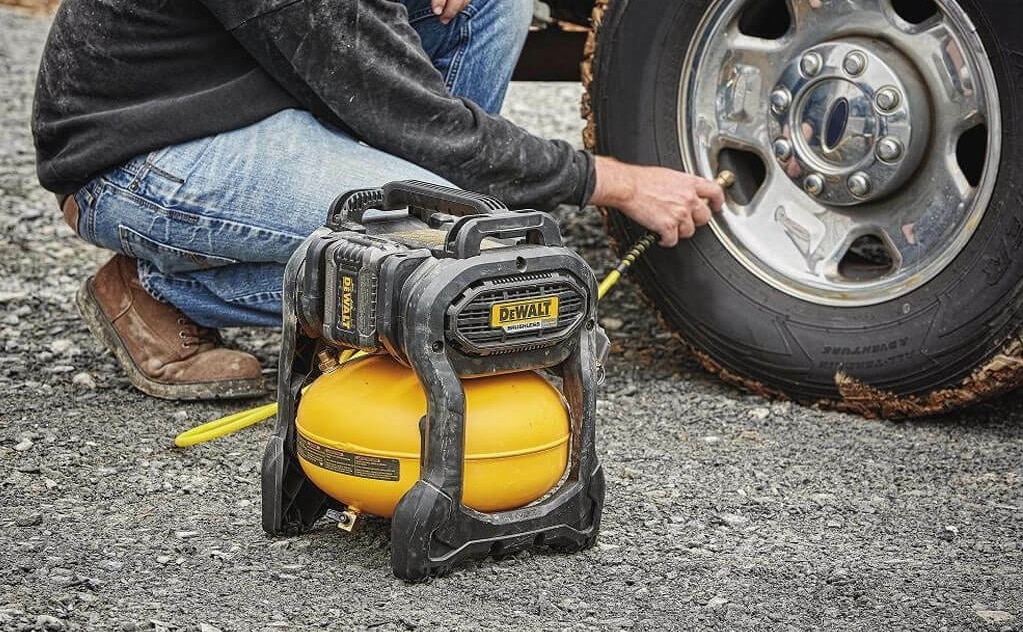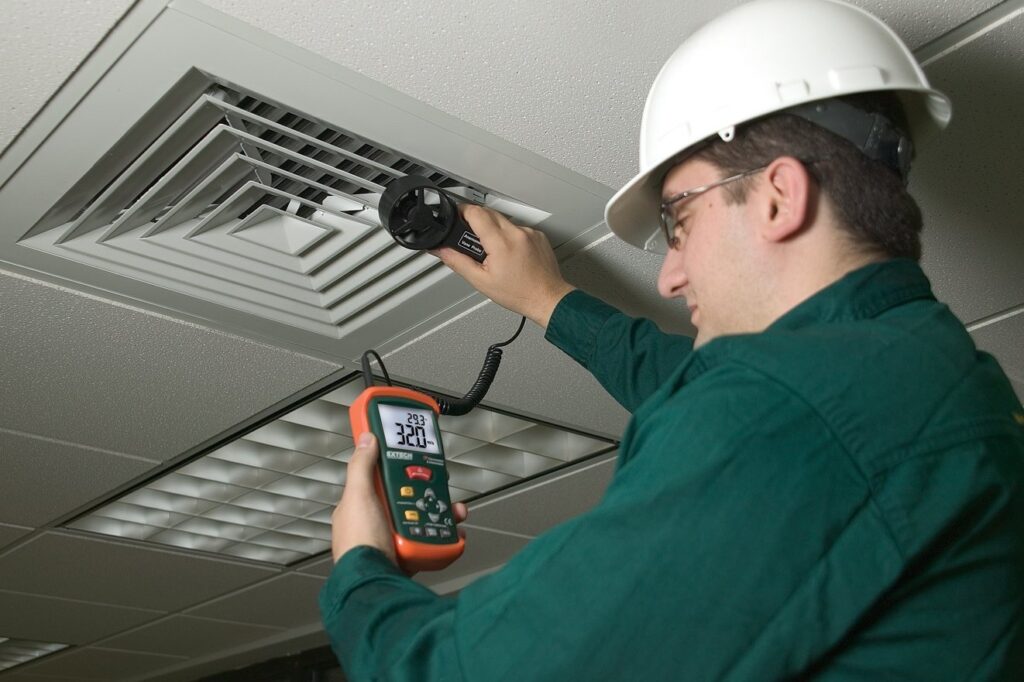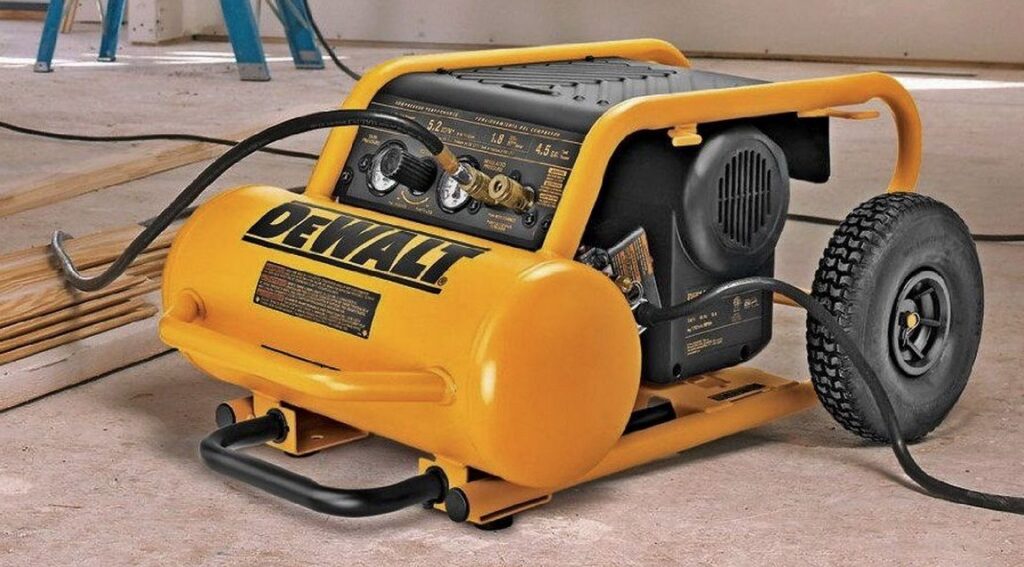.If you’ve used pneumatic tools such as drills, saws, paint sprayers etc., you know just how important an air compressor is. It’s used to compress the air that is then used to power these tools. That said, there are two main varieties of air compressors, i.e., single-stage and two-stage compressors. Some people also call the latter dual-stage or multi-stage compressors.
As implied by the difference in naming, they have different designs and components and the way they work also varies. You may also notice a difference in pricing. Nevertheless, if you’re in the market, you may wonder which one you should pick and why. Find out below.
In a nutshell, both single-stage and two-stage air compressors Trusted Source How the Air Compressor Works - Types of Air Compressors Popular Mechanics takes you inside for a look at how the air compressor works. www.popularmechanics.com are reciprocating compressors that fall under the category of positive displacement compressors. This means they use a motor to suck air into a chamber and then reduce the volume of the chamber. By doing so, they compress air which is then moved to a storage tank for use with various tools.
The compressed air can then be released at a controlled pressure depending on the needs of the tool it is attached to. For instance, if you’re using a nail gun, it needs between 70 and 120 psi of air pressure to be effective. On the other hand, a spray painter needs about 15-50 psi. The best air compressors then allow you to control the air pressure from the storage tank to match that need.
While this is a rather basic overview of how air compressors work in general, there are some fundamental differences if you compare a 2-stage vs. 1-stage air compressor.
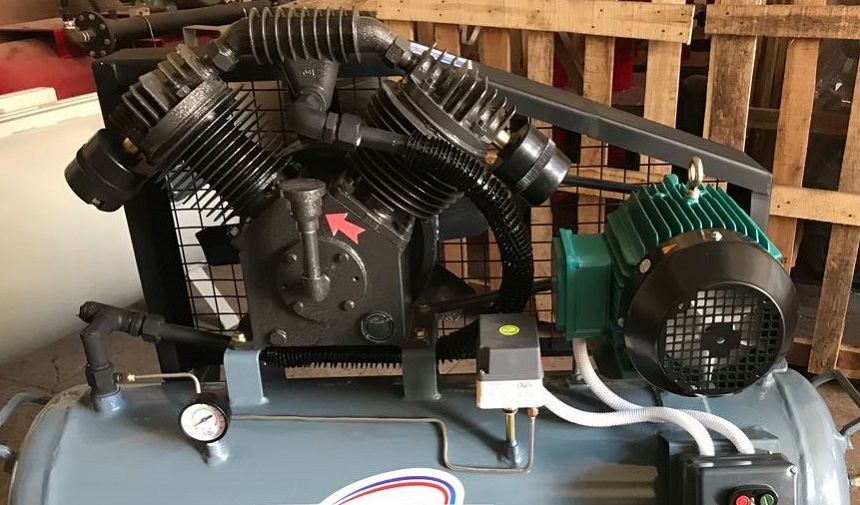
A single-stage compressor consists of several main components, including a motor, air storage tank, and cylinder. As for how the device works, the cylinder is one of the more important components. It features an inlet valve, an outlet valve, and a crankshaft with a piston.
With each cycle of the crankshaft, the piston goes down in the chamber, which opens the inlet valve. This allows for atmospheric air to be sucked into the crankshaft. After that, the piston goes back out, compressing the air to between 120 and 145 psi.
With the inlet valve now closed, the compressed air is pushed out through the outlet valve and into the storage tank. You can then use the compressed air on demand. It’s worth noting the air heats up when compressed, which can result in less efficient compression cycles.
Also, if the hot air were to come into contact with any flammables, such as gas, it could cause an explosion.
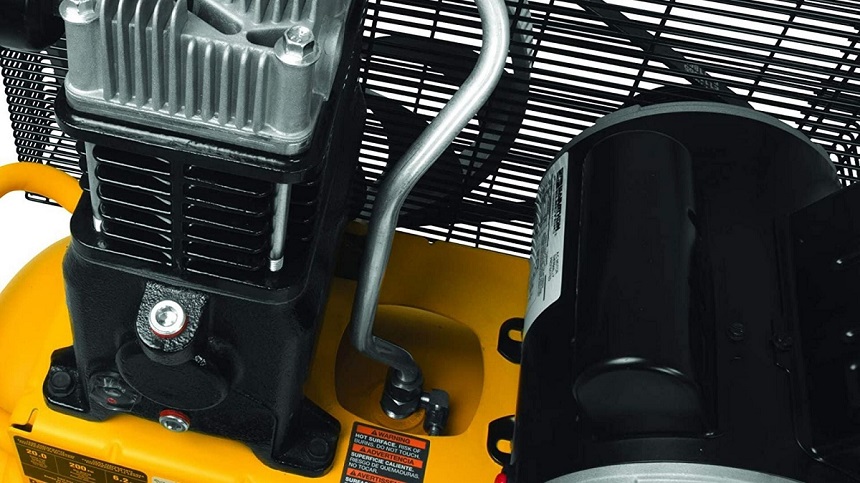
As implied by the name, a two-stage compressor features dual connected chambers. The first chamber works exactly like the one in a single-stage compressor. Air comes into the chamber through the inlet valve. Shortly after, the piston comes back up, compressing the air to about 120-145 psi, forcing it out through the outlet valve.
The air is then moved through a cooling line before reaching the second chamber. The second chamber is smaller than the first to cater to the already compressed air. Once here, the air goes through a second compression cycle where the piston compresses it further. Consequently, the two-stage compressor can produce about 290 psi of compressed air that is then deposited in the storage tank.
In a single-stage vs. two-stage air compressor, it’s easy to say the former has one chamber while the latter has two. However, that’s not entirely accurate. You often see single-stage air compressors with more than one chamber. That said, these are independent chambers that are the same size. If two chambers are working simultaneously, the machine is more efficient and can compress more air at a time.
The difference is in the size of the chambers. If there’s one big chamber and another smaller one, it’s probably a multi-stage air compressor. Also, there’s the aspect of the cooling line that transports compressed air from the first chamber to the second.
As mentioned above, compressed air is hot, and it would be dangerous to compress it a second time in that state. It might even cause an explosion hence the cooling line in the middle. Additionally, you might find some multi-stage compressors with water cooling.
Another difference between single-stage and two-stage air compressors is the latter tends to be less noisy compared to single-stage compressors of the same size. That said, most dual-stage compressors are much bigger than their single-stage counterparts, which might cancel out the noise difference for most buyers.
This means that due to the relatively small size of most single-stage air compressors, they can be quiet enough for use around the home, as low as 40 decibels in models such as California Air Tools 8010DSPC. You can find out which quiet air compressor might be best for use in your workshop by comparing the offerings from different brands. That way, you can handle your projects quietly without bothering the rest of the family while in your DIY workshop.
For most home DIY projects, you would likely use a single-stage air compressor. Take, for example, when you’re making a piece of furniture. You’ll need a saw, a nail gun, and a drill. You’ll also need to sand the project once it’s done, and you may even add a coat of paint.
You’ll likely want to use a powered tool for most of these tasks since they’re more accurate and typically get the job done faster. Fortunately, you only need about 90 psi for most of these tools to work, although some can up their requirements to about 125 psi.
These figures are well within a single-stage air compressor’s capabilities, provided the air storage tank is big enough. Furthermore, you likely won’t be using the tools continuously. This means that the heating caused by air compression shouldn’t be a problem.
On the other hand, a dual-stage compressor would work just as well. However, it’s much larger, so it will likely take up more space in your garage or workshop. Additionally, it produces a little too much power for regular air tools meaning most of the energy produced will be wasted.
Most metal work done in a DIY studio also doesn’t require much power. As such, a single-stage air compressor produces enough compressed air to power shearing, grinding, riveting, and ratcheting tools. However, the case is different for metal work in the auto assembly and repair industry.
Single-stage air compressors typically have a 50% duty cycle, so they have to cool down after a short period of working. This is because they don’t have cooling features in their design, unlike their dual-stage counterparts. This makes them unsuitable for continuous production lines like in vehicle manufacture.
Additionally, lifting cars, engines, metal parts, and screwing together these parts needs a lot more than 100 psi Trusted Source Compressed Air Uses in the Automotive Manufacturing Industry - Nex Flow Air Products Corp Description: Compressed air is extensively used in the automotive manufacturing industry. They are the tools that automate the process and making it safer for workers. From air operated conveyors that help move heavy materials to the compressed air used to dry and ensure even paint finish – it is almost impossible to think of the automotive industry without compressed air. www.nexflow.com . As such, the fact that single-stage air compressors max out at about 120 psi means they can’t handle the job. On the other hand, multi-stage air compressors and the attached pneumatic tools have a lot more power, up to 225 PSI in products like DEWALT D55146.
In food production, both single-stage and two-stage air compressors can be used depending on the scope of the operation. For instance, a single-stage model is not an issue in a restaurant shop. You can use it in one area of the kitchen to power the cutting tools, let it cool, then use it for the mixing part. Fortunately, we’ve outlined the best portable air compressors to cater to different needs and project sizes.
Conversely, if you need to maintain continuous production like in a factory, the single stage may cause losses during downtime. As such, the dual-stage air compressor makes more sense in that scenario.

If you’re wondering which pick between the 2-stage and 1-stage air compressor would be better, it would depend on your spending power Trusted Source How to Determine Needed Air Pressure for Applications It’s important to know the air pressure requirements of a given tool or application. Learn how to determine the amount of pressure for a given situation. www.quincycompressor.com and how you plan to use the device. For instance, if you have the money, it might make sense to go all out and get the most expensive dual-stage compressor you can find. After all, dual compression and extra power are a better choice, right? Wrong.
If you’re not using the compressor for continuous projects like starting a food processing plant or a manufacturing facility, you would be wasting money on features you’ll likely never use. As such, you should make it a point to balance performance and pricing.
Another scenario is that you may prefer two or three single-stage air compressors instead of one multi-stage option. That way, you can share the workload between three machines for the price of one. However, this is skewed math.
Due to its cooling features, a dual-stage machine may be able to run continuously for several hours. This should be more efficient and productive than three machines that all experience downtime.
Furthermore, since it’s a production line, you might start using them simultaneously, leading to concurrent downtime.
Ultimately, this means that you might lose more money in the long run if you try to save on costs by getting one single-stage compressor and then buying a second one when sales pick up. Instead, you may want to invest early on in a more expensive tool that can handle the workload of multiple simultaneous applications.
As mentioned above, the single is used for smaller applications like home DIY studios with woodwork or metalwork. They can also be used in some food production scenarios. However, they don’t have the power to handle large-scale operations. On the other hand, due to the second compression chamber and cycle, dual-stage air compressors can produce higher air power.
While more air power is a good thing, it might be unnecessary in a few scenarios. Take, for example, when you’re using a nail gun. These tools need about 90 psi max, and having more air power won’t do you any good. The same is true for pneumatic saws and sanding machines.
In a 2-stage vs 1-stage air compressor comparison, there aren’t any reliability issues to report if you use the tools as intended. The 1-stage tools are meant for intermittent use, meaning you need to allow for downtime. However, given most home and workshop use cases, most people won’t even need to use them for long periods. In that case, the single-stage compressors should work just fine without breaking down.
However, using the machine past its duty cycle can be problematic. After all, without any cooling components included, these machines are not built for non-stop work. On the other hand, a two-stage would be pretty reliable for continuous use and high-powered applications.
Given how the two types of machines are meant to be used, it’s no surprise that dual-stage air compressors are more expensive. There are other reasons for the higher pricing as well. For instance, there are more parts, said parts require less maintenance, they are more efficient, and the machines run cooler.
Choosing between single-stage and two-stage air compressors essentially comes down to balancing power of a product and its price. Single-stage air compressors offer less power at an affordable price. This makes them perfect for small projects and home usage, when using an advanced, heavy-duty product will be an overkill. On the other hand, some applications, as in automotive industry, require two-stage compressors, as single-stage ones simply won’t be able to handle a job. We hope that our article gave you some useful insights into the air compressor industry and helped you understand the difference between single-stage and two-stage air compressors.

